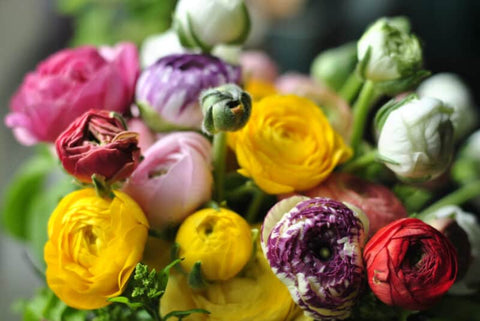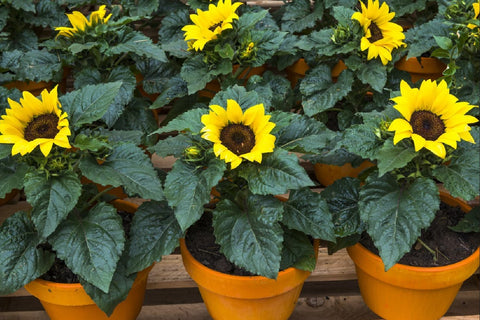As winter blankets the landscape in a tranquil hush, garden enthusiasts know that beneath the frosty surface, nature is already preparing for a burst of color and life. December is the opportune time to plan for spring blooms by introducing flowering bulbs to your garden. In this blog, we'll explore the enchanting world of December flowering bulbs, discussing their varieties and offering valuable insights into how to cultivate a vibrant spring garden that starts its journey in the heart of winter. The following content also has some reference value for raised garden beds.
The Beauty of December Flowering Bulbs
Anticipation of Spring:
December flowering bulbs are like nature's promises, offering a glimpse of the vibrant blooms that will grace your garden once winter loosens its grip. Planting these bulbs in December sets the stage for a spectacular spring showcase.

Gardening Tip: Choose a variety of bulbs to ensure a continuous display of flowers from early to late spring.
Cold Weather Warriors:
December is the ideal time to plant bulbs because they require a period of winter chilling to stimulate growth. These cold-hardy bulbs are resilient, adapting to winter conditions and emerging with renewed vigor as the temperatures rise.
Gardening Tip: Select bulbs that are well-suited to your USDA hardiness zone for optimal success.
List of December Flowering Bulbs
- Snowdrops (Galanthus nivalis):
Delicate and dainty, snowdrops are among the earliest bloomers, often pushing through the snow to reveal their nodding, bell-shaped flowers. These white wonders symbolize the awakening of nature and add a touch of purity to the winter garden.
Planting Tip: Plant snowdrop bulbs in well-draining soil in clusters for a more impactful display.
- Winter Aconite (Eranthis hyemalis):
Bursting forth with golden-yellow flowers, winter aconite brings a cheerful warmth to the garden. These low-growing bulbs are particularly charming when planted at the base of deciduous trees, creating a vibrant carpet of color.
Planting Tip: Ensure the soil is rich and moist for the best results with winter aconite.
- Crocus (Crocus spp.):
Crocuses are a true herald of spring, and some varieties bloom as early as late winter. These small but vibrant flowers come in a range of colors, including purple, white, and yellow, adding pops of color to the awakening garden.
Planting Tip: Plant crocus bulbs in well-draining soil and choose a sunny to partially shaded location.
- Daffodils (Narcissus spp.):
Daffodils, with their trumpet-shaped flowers, announce the arrival of spring in a grand fashion. They come in various sizes and colors, from the classic yellow trumpet to the delicate white varieties.
Planting Tip: Plant daffodil bulbs in the fall for a spectacular spring display.

- Tulips (Tulipa spp.):
Tulips are iconic spring flowers, known for their diverse colors and elegant shapes. Planting tulip bulbs in December ensures a breathtaking array of tulips in your garden once spring arrives.
Planting Tip: Choose a variety of tulips with staggered bloom times for an extended flowering period.
- Hyacinths (Hyacinthus spp.):
Hyacinths are known for their intense fragrance and vibrant clusters of flowers. These bulbs produce striking blooms in various colors, including purple, pink, and white, making them a favorite for spring gardens.
Planting Tip: Plant hyacinth bulbs in well-draining soil and consider grouping them for a powerful visual impact.
- Alliums (Allium spp.):
Alliums, also known as ornamental onions, are a unique addition to the spring garden. Their globe-shaped flower heads add a touch of whimsy and modernity to the landscape.
Planting Tip: Plant allium bulbs in the fall for impressive blooms in late spring.
Cultivating a Vibrant Spring Garden
- Strategic Planting:
Plan your garden layout to ensure a continuous display of blooms from early spring to late spring. Consider the height, color, and bloom times of different bulb varieties.
- Soil Preparation:
Ensure that the soil is well-draining, enriched with organic matter, and free from debris. Proper soil preparation is crucial for the success of your flowering bulbs.
- Mulching for Insulation:
Apply a layer of mulch over planted bulbs to provide insulation and protect them from extreme temperature fluctuations. Mulching also helps retain moisture in the soil.
- Watering and Care:
Water your bulbs after planting to help them settle in, and provide occasional watering during dry spells. As the shoots emerge in spring, maintain consistent moisture for optimal growth.
Celebrating the Arrival of Spring
- Creating a Spring Garden Oasis:
Combine flowering bulbs with other spring perennials and annuals to create a garden oasis that welcomes the arrival of spring with a burst of colors and fragrances.
- Welcoming Pollinators:
The early blooms of flowering bulbs serve as a vital food source for pollinators emerging from winter hibernation. Create a pollinator-friendly environment by incorporating a variety of bulb species.










